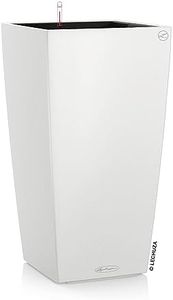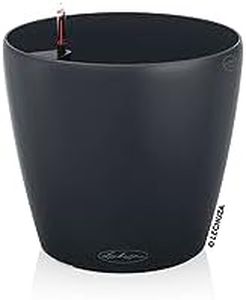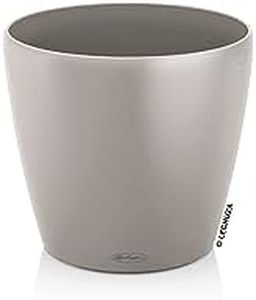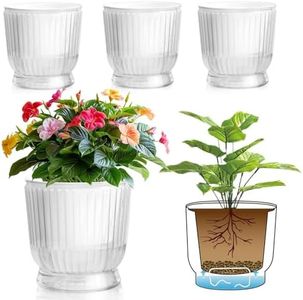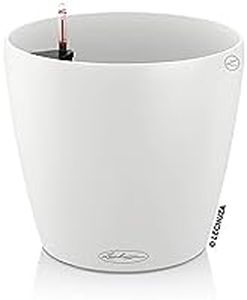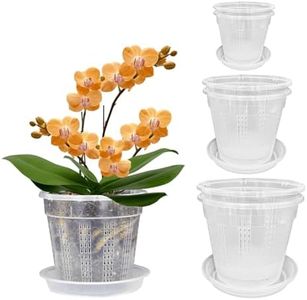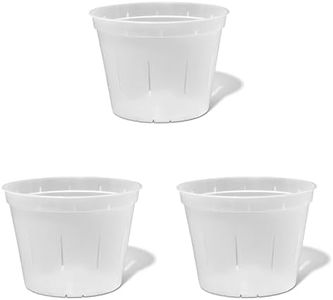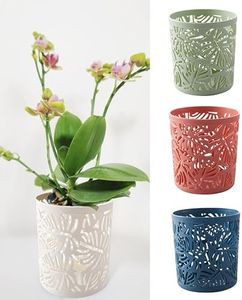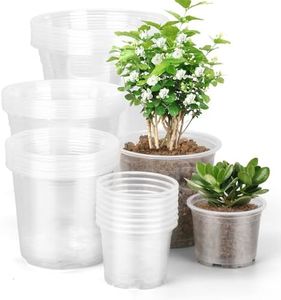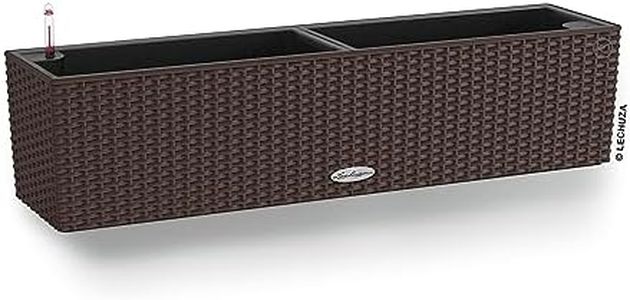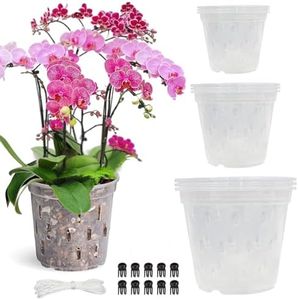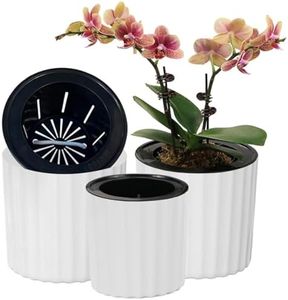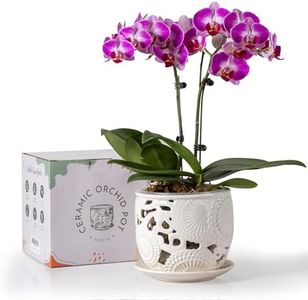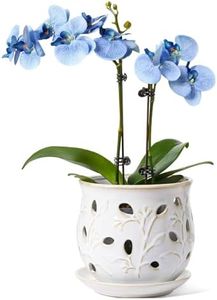We Use CookiesWe use cookies to enhance the security, performance,
functionality and for analytical and promotional activities. By continuing to browse this site you
are agreeing to our privacy policy
10 Best Pots For Orchids
From leading brands and best sellers available on the web.Buying Guide for the Best Pots For Orchids
Choosing the right pot for your orchids is very important to help them grow healthy and strong. Orchids have unique needs compared to most other houseplants. Their roots like air, they don’t like to sit in wet soil, and they can be sensitive to changes in their environment. When shopping for a pot, think about what helps replicate orchids’ natural habitat. The pot you select should support good drainage, allow air flow to the roots, and fit the size and type of your orchid. Understanding key features will help you pick a pot that encourages your orchid to thrive.MaterialThe material of an orchid pot can be clay/terra cotta, plastic, ceramic, or even mesh. This matters because different materials impact how much air and moisture the roots get. Clay and terra cotta breathe well and help moisture leave the pot faster, which is good if you tend to water a bit more or live somewhere humid. Plastic pots keep moisture longer, perfect if your home is very dry or you sometimes forget to water. Mesh pots or slotted containers give roots maximum air. To choose, think about your watering habits and the climate in your area—pick a pot material that balances moisture and airflow based on your needs.
DrainageOrchid pots need large drainage holes or slots. Good drainage means excess water escapes quickly, preventing root rot—a big issue for orchids. Some pots have just a couple of holes at the bottom, others have many slits or side holes. If you tend to overwater or your orchid is inside where air circulation isn’t great, more drainage is better. If your home is very dry, you might use a pot with only a few holes to keep more moisture. Starting out, always pick a pot with generous drainage; you can make it suit your conditions with different potting mediums or by adjusting watering.
SizePot size is about the width and depth of the container. Orchids like their roots to be snug but not squeezed. Too big a pot holds too much water and can cause rot; too small, and roots can get crowded and stressed. Look at the root mass of your orchid: choose a pot that leaves a little space around the sides, enough for a couple fingers but not more. If you’re re-potting, only go up one size from the current pot. Think about the orchid type—some have shallow roots, some deeper—so select a shape and size that fits your particular plant.
TransparencySome orchid pots are clear, while others are opaque. Transparent pots let you see the roots, which can help with monitoring root health and knowing when to water, as many orchid roots turn green when hydrated. Opaque pots don’t give this visual clue but can provide more light protection for roots that don’t need it. If you’re new to orchids or want to watch your plant’s roots, choose a clear pot. For mature plants or when root monitoring isn’t as important, opaque works fine.
Ventilation/AirflowVentilation refers to how much air gets to the orchid’s roots in the pot. Pots can have simple bottom holes or extra side slots and cut-outs for more airflow. Good airflow mimics orchids’ natural habitat, and is important to avoid fungal or bacterial problems. If your orchid variety enjoys lots of air at the roots (like epiphytic types), consider pots with more holes or slats. In drier or less humid homes, fewer slots might be better to prevent roots drying out too fast. Match ventilation to both your plant type and your home’s climate.
